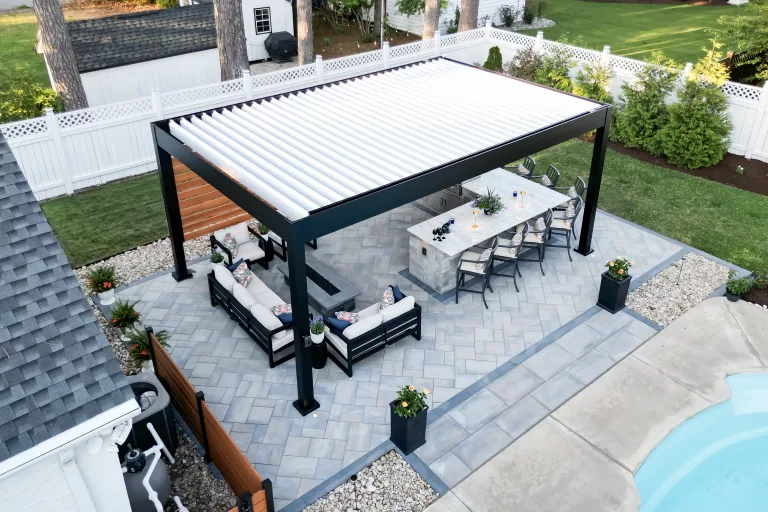When planning your outdoor space, you may wonder, “Is a pergola considered a structure?” This question is important for understanding local building codes, permits, and even the impact on property value. Let’s explore what makes a pergola a structure, how it’s classified, and why it matters.
Table of Contents
Defining a Structure
What Constitutes a Structure?
A structure is broadly defined as any construction that is fixed to the ground, has a defined purpose, and provides some form of support or enclosure. Common examples include houses, sheds, garages, and decks. These constructions serve specific purposes, whether for shelter, storage, or aesthetics.
Key Factors That Make a Pergola a Structure
Several factors determine whether a construction qualifies as a structure:
- Permanence: A structure is intended to last and isn’t easily moved.
- Purpose: Every structure serves a specific function, whether practical or decorative.
- Attachment: Structures are connected to the ground or another stable construction, like a house.
By understanding these characteristics, we can better classify a pergola within the broader category of structures.
Criteria for Classifying a Pergola as a Structure
Size and Scale
The size and complexity of a pergola significantly affect its classification. Larger, more elaborate pergolas—such as the R-BLADE™—often equipped with lighting, motorized louvers, or integrated seating, are more likely to be considered structures. Simpler, smaller pergolas may not always fall under this classification.
Attachment and Support
A pergola’s classification depends on how it’s attached to the property. Pergolas supported by regular posts fixed to the ground or connected to a house is considered more permanent. In contrast, portable or cantilever designs may not meet this criterion. Additionally, pergolas are available in various configurations, including freestanding, attached, inserted, and multi-zone designs, offering flexibility in integrating with your outdoor space.
If you’re still asking, “Is a pergola considered a structure?”, understanding these configurations can help clarify its classification.
Permanence
The intended lifespan of the pergola is a crucial factor. Pergolas made from durable materials, such as aluminum, are often classified as permanent structures. Aluminum pergolas stand out because they resist weathering and require minimal maintenance, ensuring a long-lasting addition to your outdoor space.
Purpose
The function of a pergola also influences its classification. Whether it’s designed for shade, aesthetics, or creating an outdoor living area, its purpose highlights its importance. A pergola that enhances your patio’s usability often leans toward being classified as a structure.
Are Pergolas Legally Classified as Structures?
Local Regulations and Building Codes
The classification of a pergola often depends on local building codes and zoning ordinances. Some areas have specific regulations for outdoor structures, including pergolas. For example, a pergola attached to a house may require adherence to setback rules or property line restrictions.
Consulting your local building department is essential to understand the specific requirements in your area. For instance, some communities may classify a freestanding pergola differently than an attached one.
Permit Requirements
In many locations, building a pergola may require a building permit. The need for a permit depends on factors such as size, height, and location. For example, the K-BANA™ pergola, known for its modular design, often does not require a permit depending on local regulations.
Obtaining the necessary permits involves:
- Submitting design plans to the local building department.
- Ensuring compliance with zoning laws and safety codes.
- Paying any required fees.
Understanding these steps can save time and prevent legal issues during your pergola project.
Impact on Property Value and Homeowner’s Insurance
Classifying a pergola as a structure can influence property value. A well-designed, permanent pergola enhances the outdoor living space and adds aesthetic appeal. Additionally, homeowner’s insurance may cover damages to a permanently attached pergola, providing peace of mind.
Conclusion
In summary, the question, “Is a pergola considered a structure?”, depends on its size, attachment, permanence, and purpose, as well as local regulations. To ensure compliance, consult building codes and secure necessary permits before starting your pergola construction. A pergola not only elevates your outdoor space but also adds value to your property when planned thoughtfully.
Ready to start your pergola project? Contact Azenco Outdoor today to explore our range of pergolas.


